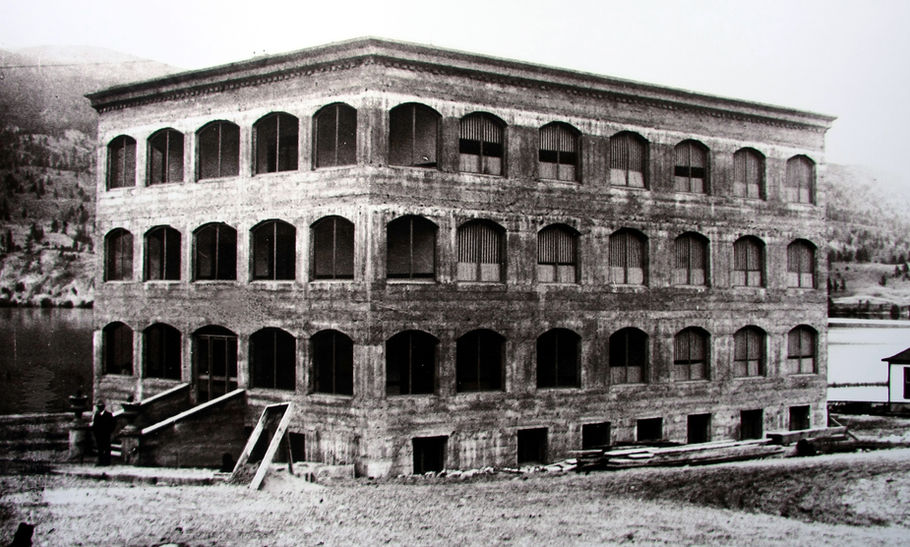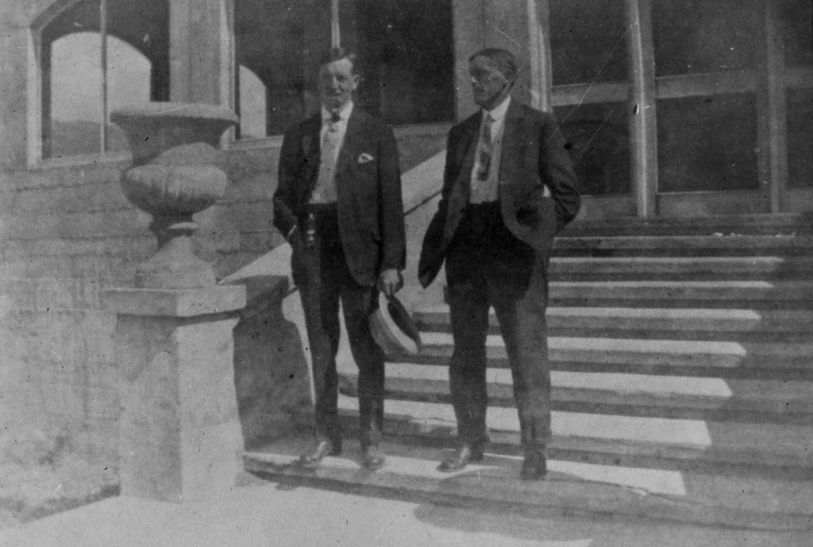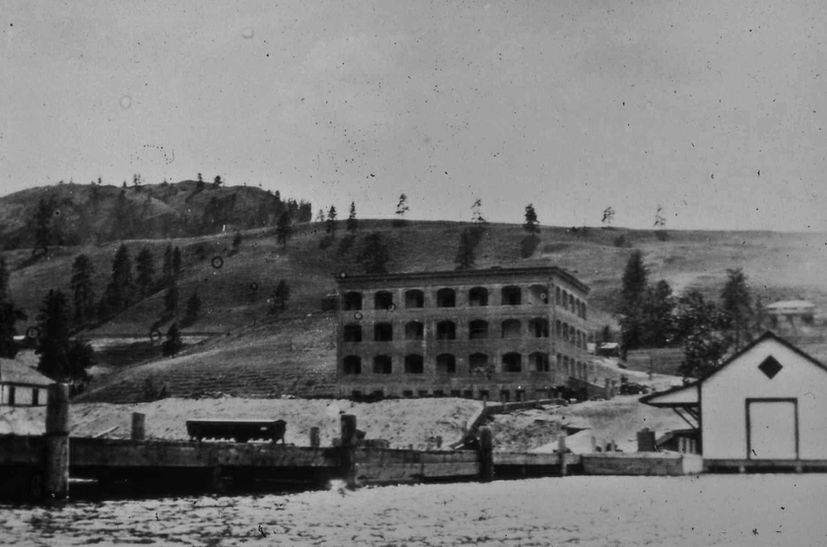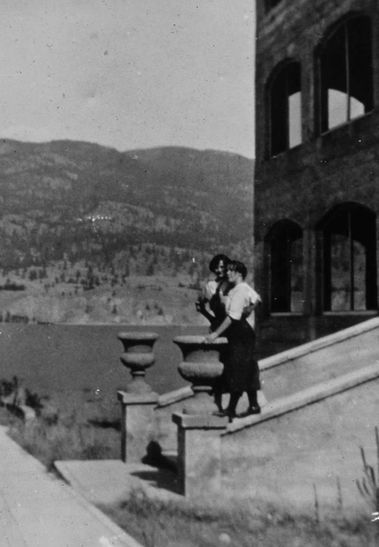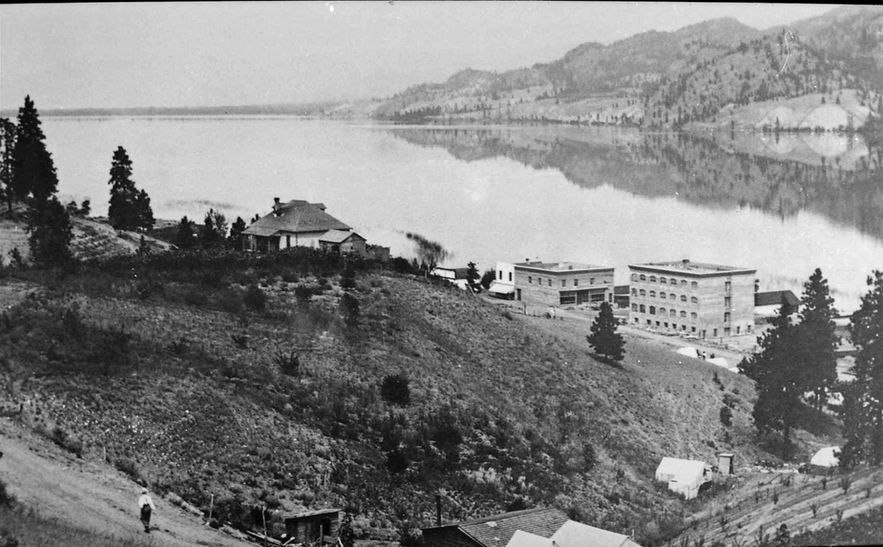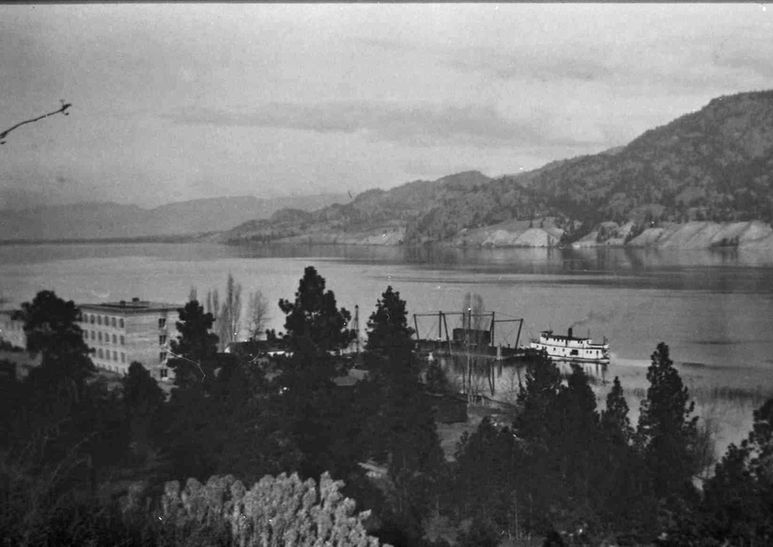

"Restoring the Heart of the Community"
Historical foundations
Hotel Kaleden opened its doors in 1912, offering luxurious stays with scenic views. It featured 26 beds and two restaurants.
The outbreak of World War I and the Great Depression led to the hotel’s closure and the removal of its interior.
In 1982, Fred King sold the hotel to the Regional District of Okanagan Similkameen.
Hotel Kaleden, now a significant historical landmark, holds a special place in our community’s heart. It has garnered recognition at the provincial, national, and international levels as a heritage site deserving preservation.
Preserving Hotel Kaleden will take our collective efforts. We can all make a difference by contributing generously, regardless of the donation size, to preserve this beautiful and iconic site.

Why is it important to save Hotel Kaleden?
-
Heritage Site: Hotel Kaleden is an internationally recognized site visited by tourists and recently used for filming by the Film Commission.
-
Visitation Site: It serves as a major visitation site on the Okanagan Trail network.
-
Public Safety: The hotel must be protected from further erosion.
-
RDOS Recognition: Since 1996, the Regional District of Okanagan-Similkameen (RDOS) has recognized the hotel’s heritage value (thanks to Dan Ashton, MLA).
-
Historical Showcase: The hotel showcases the history of the Okanagan Region, spanning from Hedley to Summerland.
-
Multi-Use Building: It provides a venue for community and regional events, weddings, concerts, etc., generating revenue for the region.
-
Site Donor’s Wishes: Fulfilling the wishes of the site donor, Fred King.

Implications for Inaction
If no action is taken, Hotel Kaleden will be fenced off, and over time, its structural integrity will deteriorate to the point where it must be demolished. This would result in the loss of one of the last remaining early-built concrete constructions in B.C., an important piece of B.C. history, and a valuable asset representing our early pioneering days. Additionally, the cost of demolishing the hotel would fall upon the taxpayers of the community
-
Pledges: Community members can make pledges toward the restoration project.
-
Volunteering: You can volunteer your skills and expertise to support the Hotel Committee.
-
Networking: Sharing networks and potential leads for fundraising with various donors and agencies.
-
Community Support: Rallying other community members to join the restoration efforts.
Help Save Hotel Kaleden: Play your part to restore the heart of our community





Chris Scott - Chair
Gail Jeffery
Mike Gane
Doug King
Tom Siddon
The old hotel
The shell of the old hotel endures, even though its life as a viable enterprise was short
Jim Ritchie, like most successful entrepreneurs, was a man with intense enthusiasm and optimism. At the time that Kaleden was founded, he saw the opportunity to make the community a service centre for the mines scattered along the forty-ninth parallel and both the hotel and the store across the street reflected that concept. The store, under the management of Dave Lapsley, was a very successful commercial business for a number of years but the hotel had a much shorter span as a viable enterprise.

Construction of the Kaleden Hotel in 1911. Four stories of hand-mixed concrete was wheelbarrowed into place to build the structure.

The front entrance to the hotel.
This failure to become financially profitable had nothing to do with a lack in the service provided, as the building compared most favourably with others in the valley. The building had its own power plant, using a water-driven generator and each room had a bath as well as an outdoor sleeping porch. Two dining rooms were provided, the first a quite formal one, serving the travelling public and second more utilitarian area, which met the needs of the many single men who were busy on the newly planted orchards or at work on the homes being built. One feature, often forgotten, was the large hotel gardens planted on the slopes leading up to Pine Street. This garden produced both flowers and vegetables and left a lasting reminder of its day in the asparagus plants which flourished wild for years in every part of the community and may still be found in sheltered spots along the roadside.
The construction of the hotel and store offered an amazing challenge to the crew of Harry Tomlin, a Summerland contractor who had just completed erecting the Baptist College buildings on the lower slopes of Giant’s Head Mountain in that community. The cement for the shell of the two Kaleden buildings was mixed on the site and laboriously pushed in wheelbarrows along rather fragile looking scaffolding which encircled the buildings, going ever higher as the work progressed. No wonder the saying was, “A job for strong backs and weak minds.” The interior finishing work was far less hazardous but done with great attention to detail and in its heyday it must have presented a welcome greeting to the traveller, with a roaring blaze in the rotunda fireplace.

The hotel in its early days.

The Hotel Kaleden dining room.
The War of 1914 –1918 may have been the cause which shut the hotel down, but the failure of the venture was inevitable as better roads and faster transportation made a stopover point in the little community a minor requirement. It remained closed for years, with its use limited to providing space for the Kaleden Irrigation District office and change rooms for young swimmers in the summer. Finally it was purchased by Penticton businessman Charles Oliver and he dismantled the interior, salvaging and selling flooring, plumbing fixtures, doors and other materials. He had intended to dynamite the outer shell, but when Jim Goodwin, who lived in the store across the street, expressed concern that the blast might have serious consequences for his building, Oliver was glad to sell it to him for a dollar, thus freeing himself from any liability claims.

The newly completed hotel on Kaleden’s waterfront.
From that point on, ownership was transferred to Fred King and Jim Robertson and then finally to the community where it and the land surrounding are designated a park. In our Centennial year [2009], it is the most prominent reminder of our early history.
The history of the old hotel was written by the late Ron King and published in Kaleden's Centennial 1909–2009. That history has been adapted for the website. A copy of the original publication, including the accompanying photographs, may be accessed through the Kaleden Museum.
The community is making every effort to ensure the structure remains standing as a Heritage site.
Photographs of the old hotel
The photographs below are from various, unknown sources. Some are available to view in physical format at the Kaleden Museum and Archives. Enjoy!
